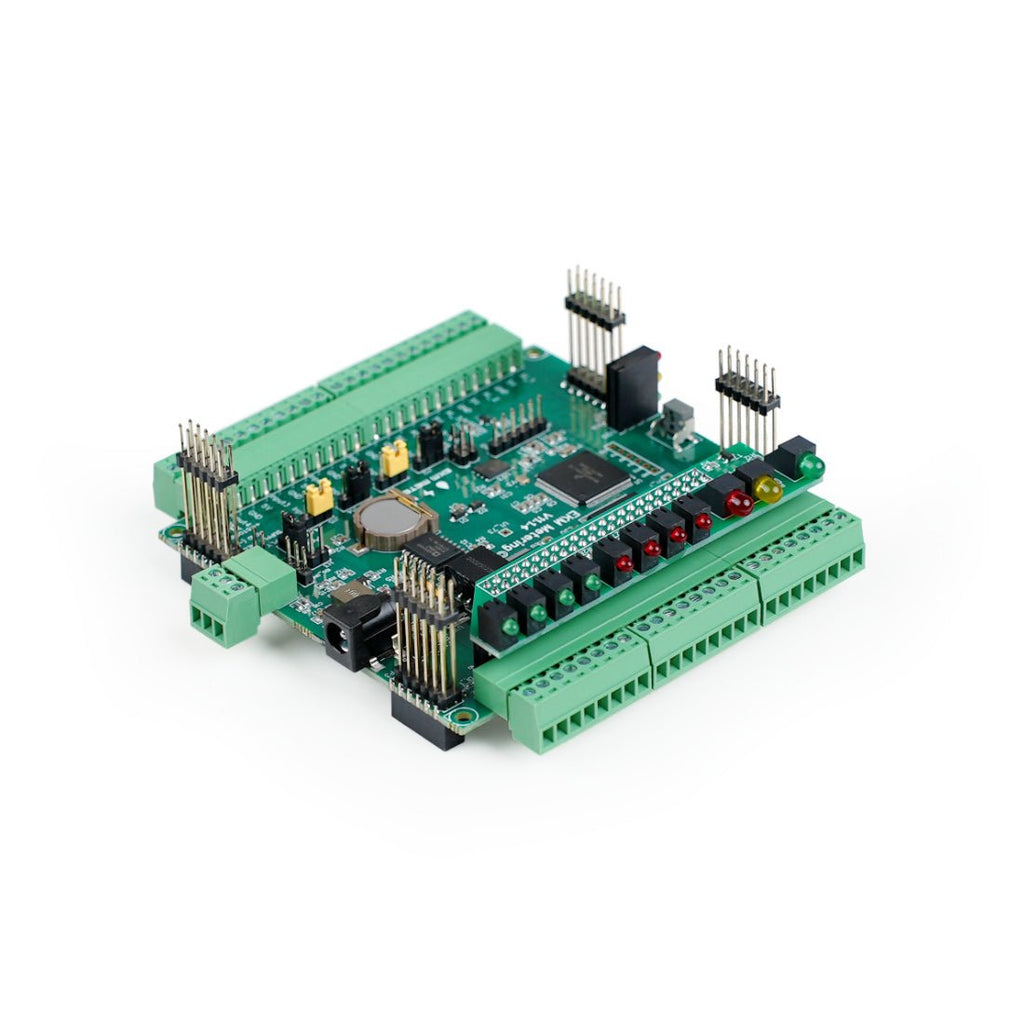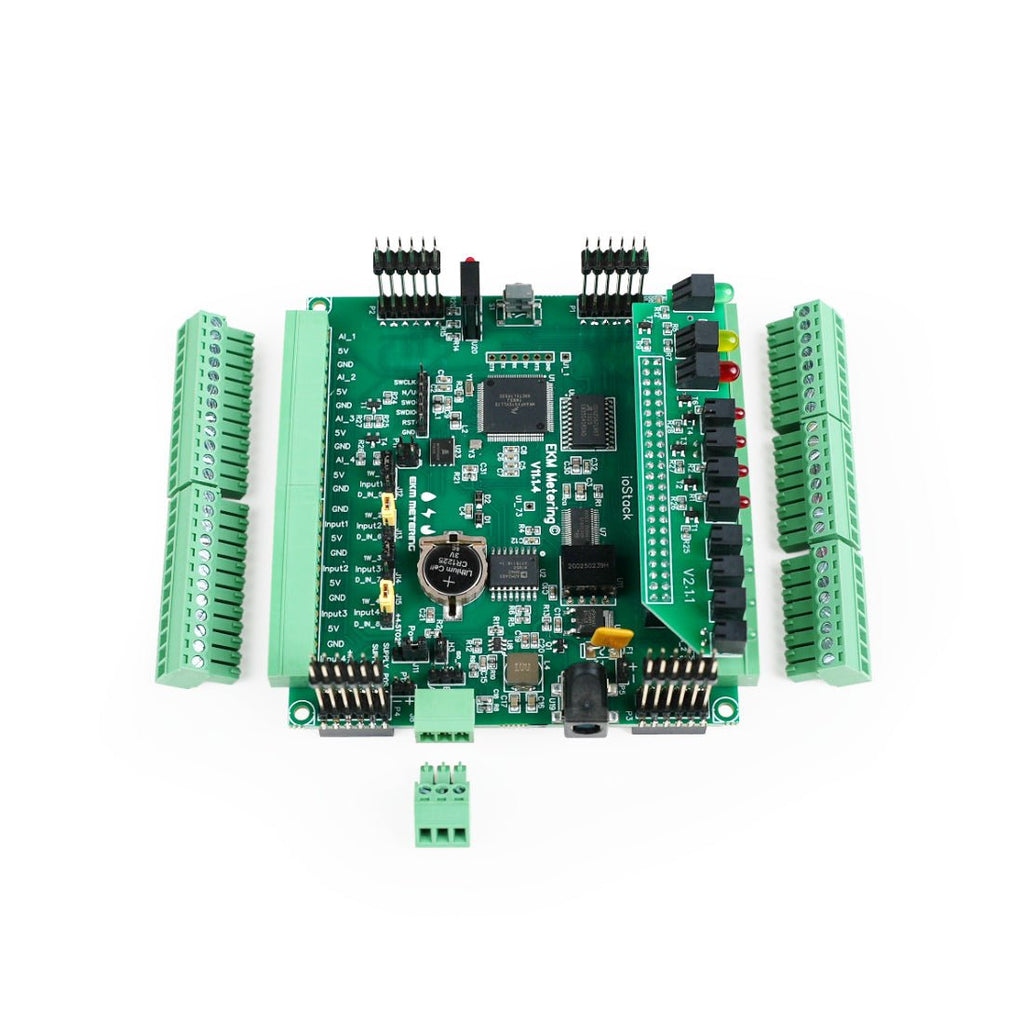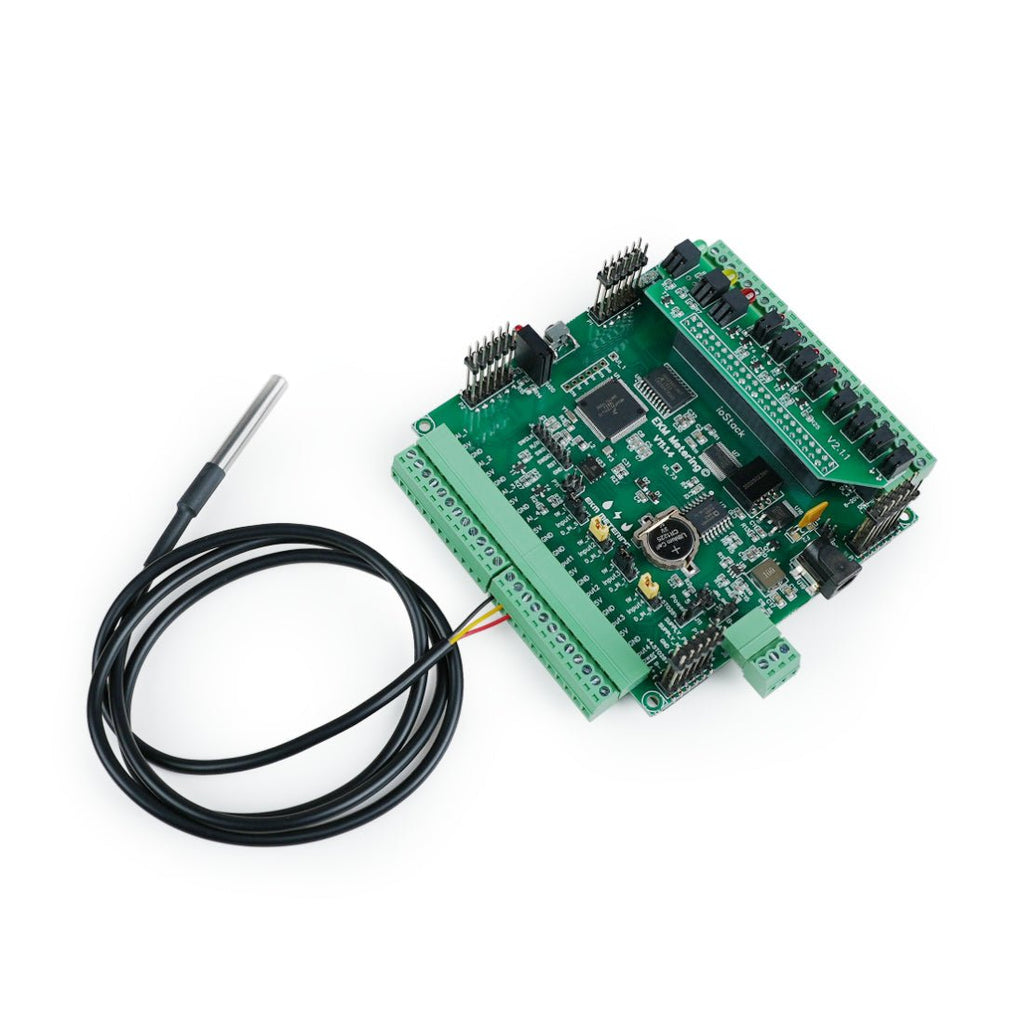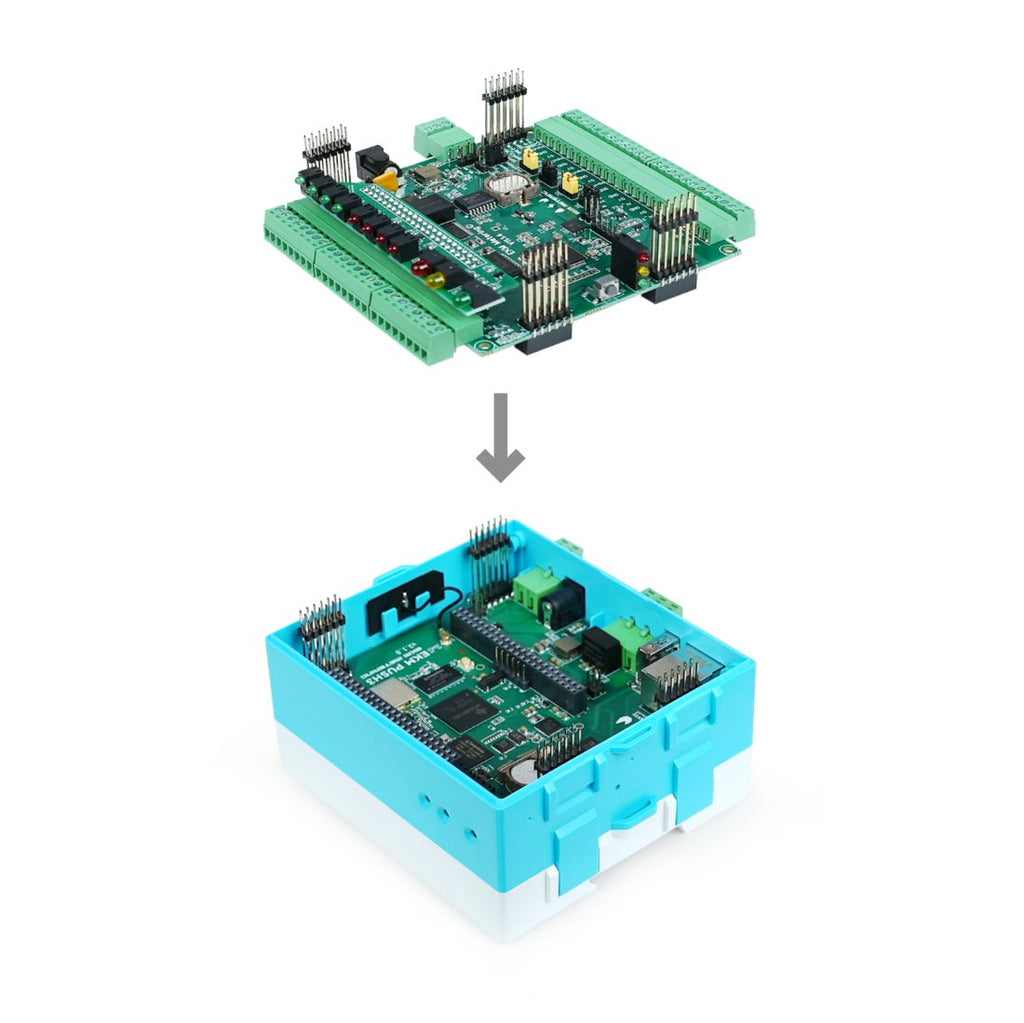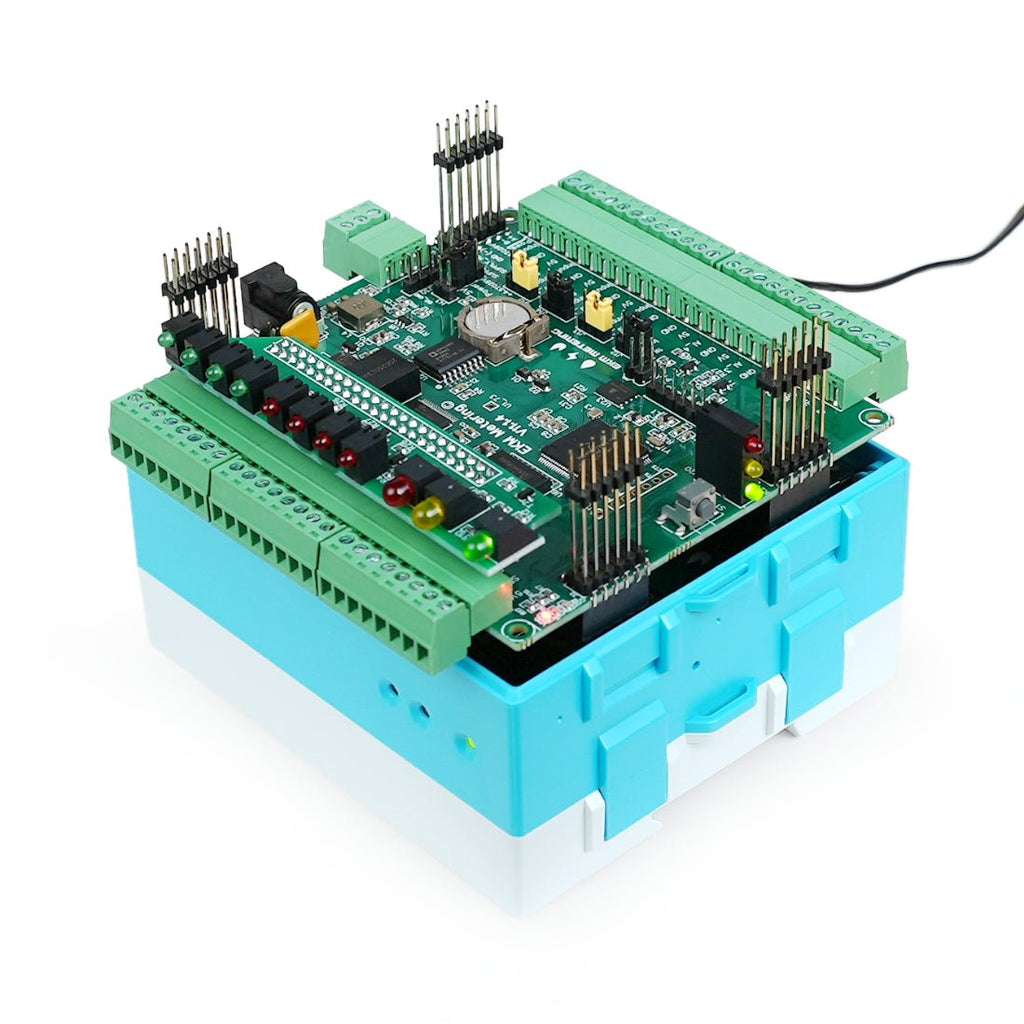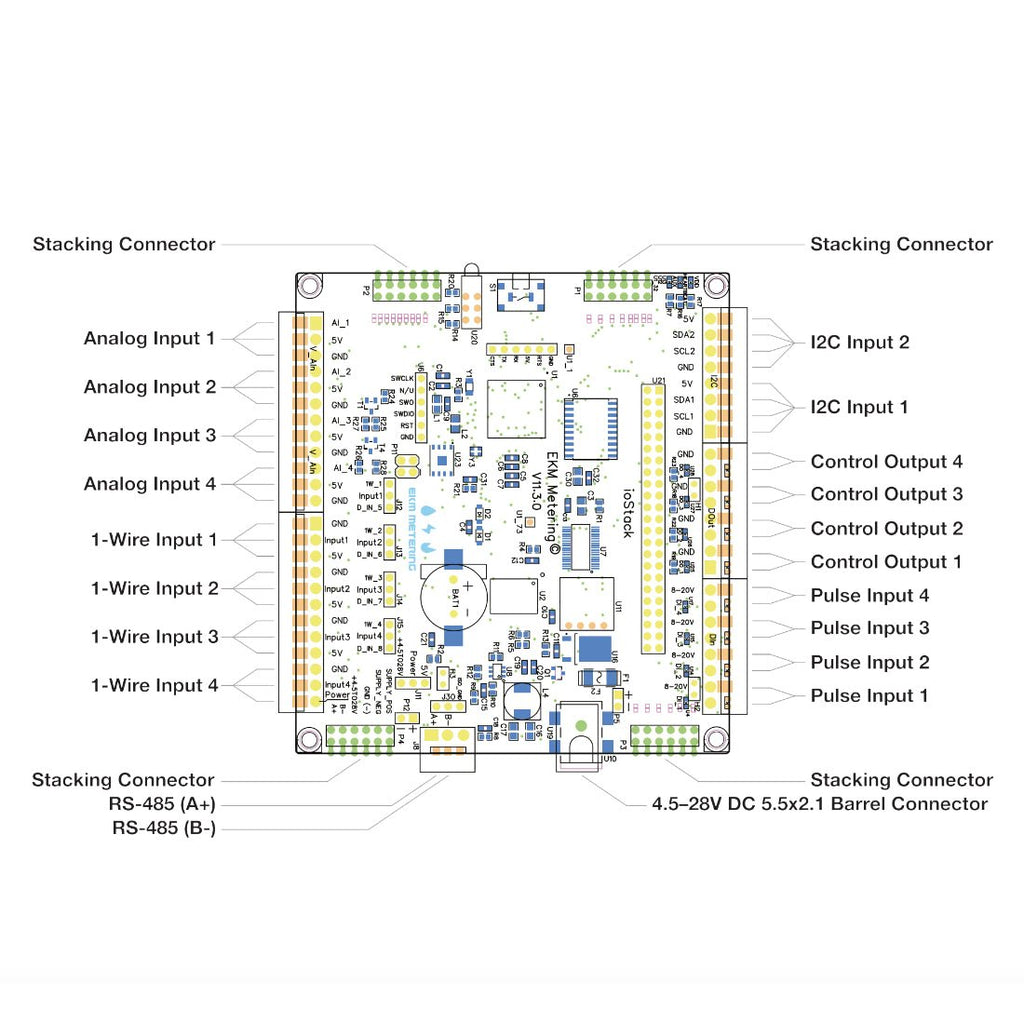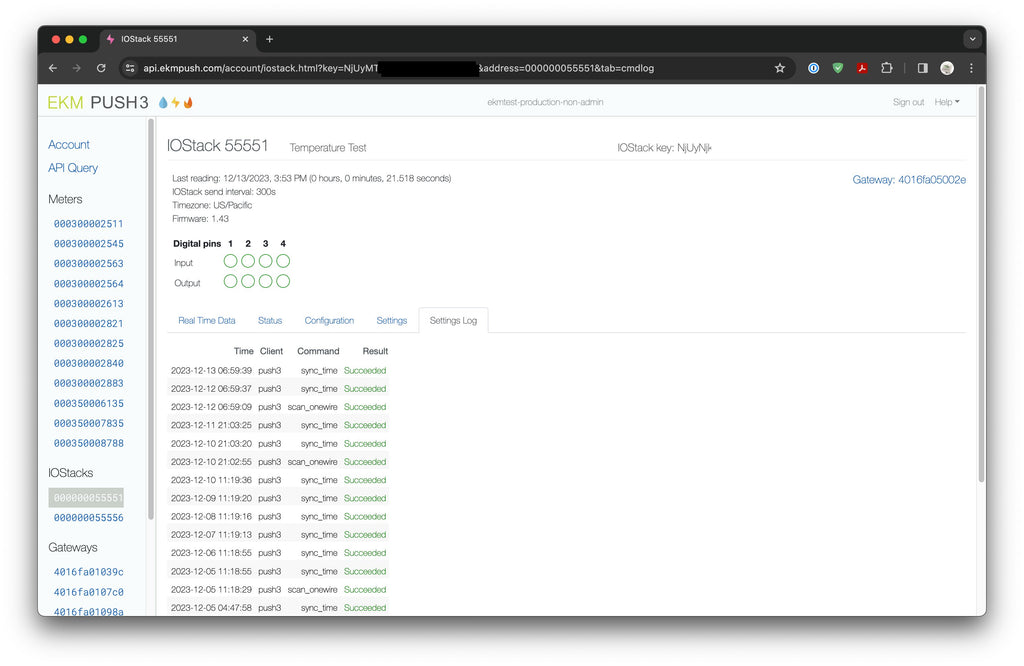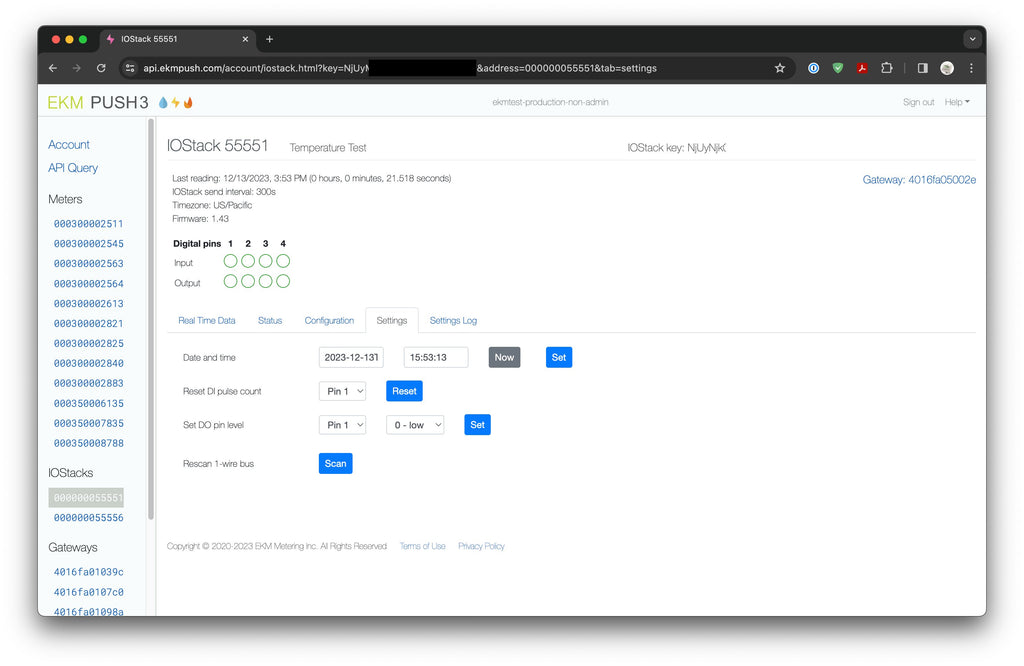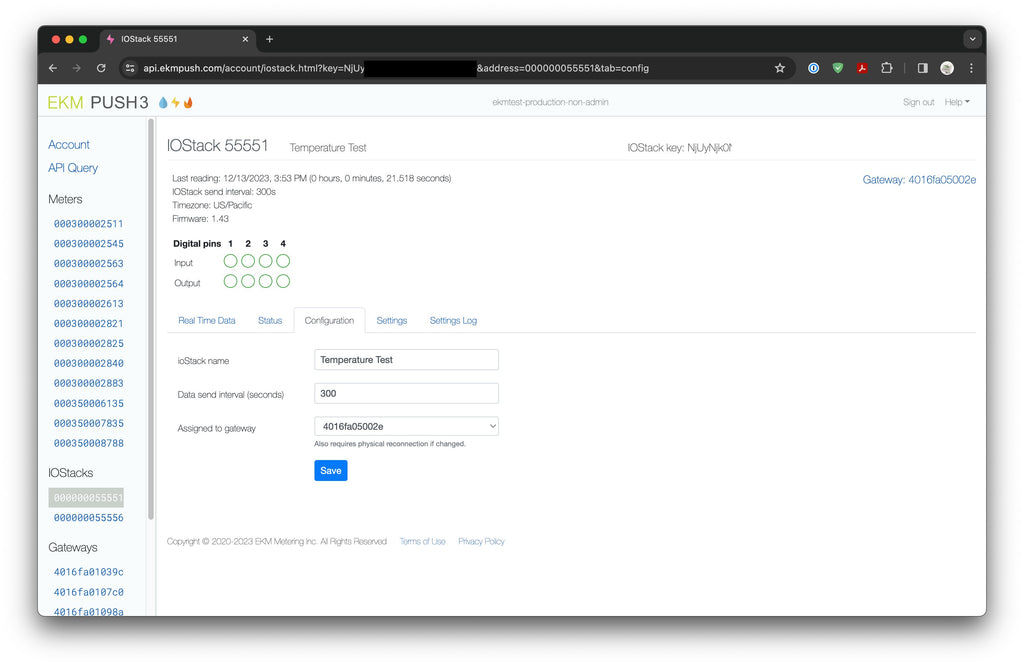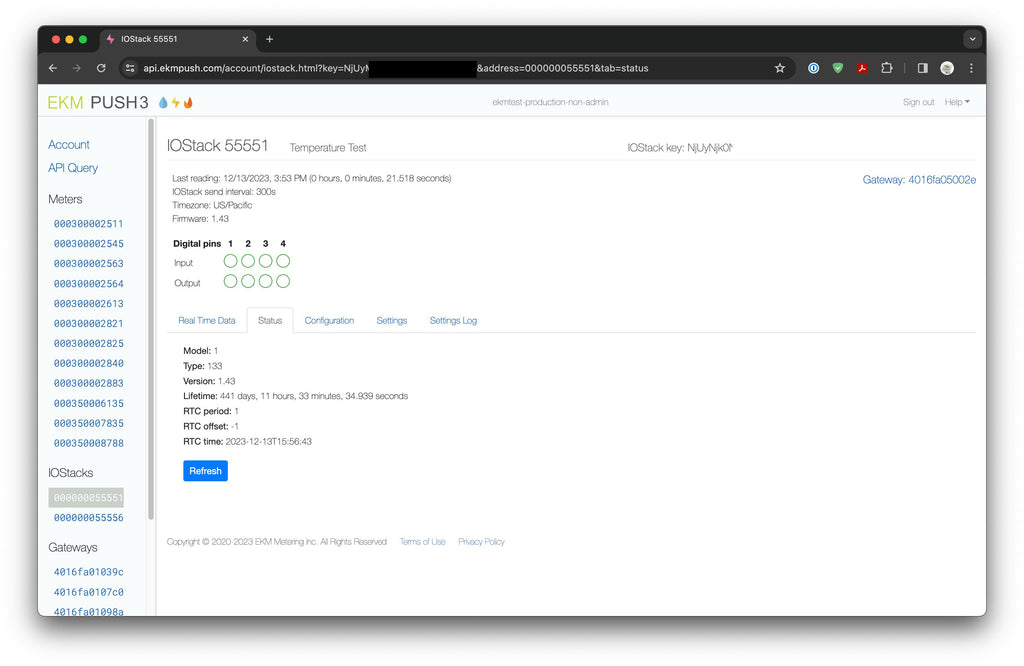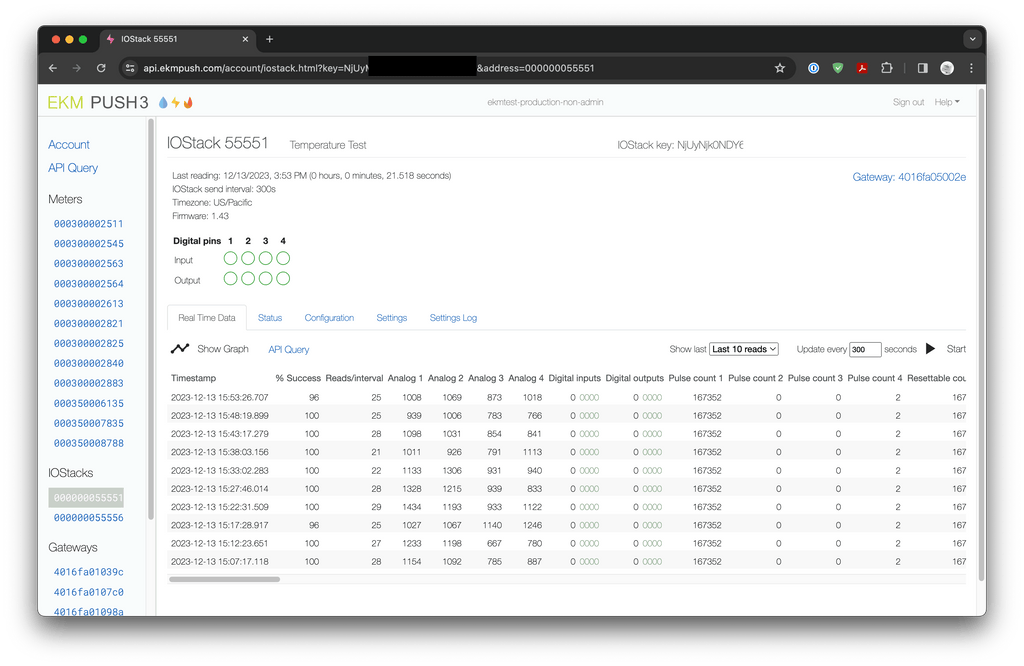ioStack (beta) - Pulse Counting, Sensor Input/Output, and Control Hub - 12VDC
The EKM-ioStack (beta) is our new hub for counting pulses, for reading analog and digital sensors, and for control.
More information
Description: Sensor input and control output hub
Connections: RS-485, 12V DC Power, 4x Pulse Inputs, 4x Analog, 4x Control, 4x 1-Wire, 2x I2C
Meter Support: Pulse output water and gas meters
Sensor Support: 0-5v Analog, 1-Wire, I2C
Data: RS-485. Supported by EKM Push3
Features: Included: ioStack (only bottom case, with DIN rail clip, included) 12V power supplies sold separately.
Model: EKM-ioStack (beta)
The ioStack is supported by Encompass (for pulse count data), the EKM Widget, and our open cloud API for both real-time data and summary data.
FEATURES OF THE IOSTACK
4x Pulse Inputs
Can be used in multiple ways:
4 x Pulse Counters (from water or gas meters, like the v.4 Omnimeters)
4 x Inputs States (used to know in real time if a switch is open or closed)
4 x Runtime timers (used to meter the time a machine has been on or off)
4 x Pulse rates (used to calculate the rate of flow or speed of an object, etc)
These pulse inputs can be used for counting the pulses of water meters and gas meters in order to know the volume of water or gas measured over time. They could be used to know if a door is open or a pressure sensor senses that your tank is full, they could be used to allocate how much time a tenant has used the central air conditioner, they could be used to know how fast the water is flowing through the water meter or how fast the shaft on a motor is spinning, etc.
4x Analog Inputs
The ioStack also has 4 x Analog Inputs. These 0-5v sensor inputs are great for measuring things like temperature, pressure, tank levels, humidity, light levels, DC voltages, etc. You could use these to know how full your water tank is, what the temperature and humidity in your remote warehouse or building is, the average light level per hour, remotely sense the voltage of a vehicle (such as a boat or forklift) battery over time, etc. These values are especially valuable when the data is sent the the cloud where you can see the real-time values and the values historically over long periods of time.
4x Controllable Outputs
These outputs can be used to control 4 separate devices, these could be relays, solid state relays, valves, etc. You can control these outputs remotely via the EKM Push3 gateway over the internet. You can control them via our web interface, by using Push3 gateway based triggers, by our open web APIs, or locally over RS485. This is useful for load flexibility, triggering, turning off water remotely, etc.
4x 1-Wire Buses
These are primarily used for temperature sensors. You can have multiple 1-wire temperature sensors on the same bus, or on multiple buses. These are similar to the analog sensors above, but the data does not need to be converted from an analog value to a human readable value, they are already human readable. We offer a 1-Wire Temperature Probe that provides temperature data in Celsius.
2x I2C Inputs
The ioStack also has 2x I2C Inputs. These have been included on the beta units as a test to measure interest from users. There is currently no support for the I2C data via the Push3 system or our software. If the I2C data interests you please let us know!
Stacking
The ioStack is stackable with the Push3, meaning that both devices have pins and headers with the same spacing and layout, which allow the two devices to be physically connected. The stacking connection sends DC power and RS-485 communication up and down the stack.
You can fit up to 3x ioStacks, and one Push3 gateway, in one of our Large Enclosures. Two of the ioStacks would be stacked together and the 3rd ioStack would be stacked on the Push3. The two stacks would be side by side in the enclosure.
We think the ioStack is a great addition to our offerings so that you will have more insight and control into your remote assets. Not only can you use the EKM Push3 system to remotely meter your thousands of electricity, water, or gas meters around the world, but you will also be able to remotely sense the temperature, voltage, pressure, humidity, light levels, etc at your thousands of sites. This combined with great data access and web based charting, makes for a really powerful and scalable system. It becomes even more powerful if you are able to leverage EKM Push3 gateway based triggers to alert you to issues or automatically control devices if thresholds are reached. You could save thousands in avoided damages just by sensing a leak or water on your floor for example by triggering on either the pulse counts, pulse rate, or the analog inputs for example.
THESE DO NOT SUPPORT IOSTACK
Push3 I2C data (support undecided)
Push2 (no support planned)
EKM Dash (no support planned)
THESE DO SUPPORT IOSTACK
EKM Widget
The EKM Widget offers another option for quickly seeing your sensor data online for EKM Push3 users. It is also easy to save and share your Widget setting once you have it setup how you want. Here is an example of a water tank level sensor:
EKM Push Account Portal
Like Omnimeters, ioStacks are listed in your online Push3 Account Portal. When logged in you can view raw data, view the status of your ioStack, configure your Push3/ioStack, and make settings in your ioStack.
Real Time Data:

Status:

Configuration:

Settings:

Settings Log:

You can use 485Bee radio modules, which create a mesh network for wireless communication between the ioStack and the Push3 gateway.
It is possible to fit this into a Watertight Enclosure
For developers who are interested in working with our Open Push APIs, please check out our Developer Portal.
For additional information about our products and services, we encourage you to visit our online Knowledge Base, which provides spec sheets, videos, tutorials, FAQs, diagrams, and more.
Spec Sheet: EKM ioStack
Customer Photo Gallery
Be one of the first to share photos of your installed meters! Click the button below to submit your photos and receive $10 off your next order once your post is approved!


